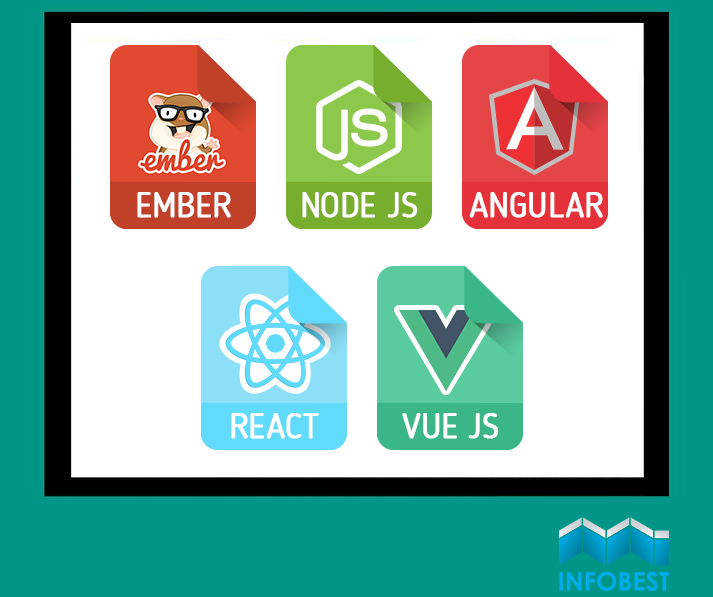Summary
0. Time needed to finish reading: 2-4 minutes
1. Introduction
2. JavaScript frameworks at the mid of 2018
3. Frameworks & Libraries you could check out
4. Conclusion
#1. Introduction
As you probably noticed, we recently touched more topics with the focus on web (WordPress tutorials, discussions about data extraction tools, PHP frameworks etc). And in today’s article, we will continue our “trend”, but we’ll be changing the direction to the front end. And if you haven’t been living under a rock or took a sabbatical year, you surely know that JavaScript is “the name” on everyone’s lips. Well, on everyone’s keyboards, to be more exact.
Now, I have to mention that JavaScript is not used exclusively for the front end. It’s a programming language that’s very flexible and very powerful, and it will allow you to build stable server-side applications. Airbnb, LinkedIn and Walmart leverage this technology in building applications with the help of Node.js. And the ecosystem now has so much more to offer. You can use Express.js – the most popular Node.js framework to get started quickly. Or you can try any of the following frameworks: Meteor, Sails.js or Socket.io. Truth being told, if you properly understand the limitations of this technology, you can successfully use the advantages it offers: efficiency, speed (reuse codebase) and cross-functionality.
#2. JavaScript frameworks at the mid of 2018
Back to the front end part: let’s see how JavaScript frameworks are performing at the mid of 2018.
In the first phase, let’s compare the main players in the market and analyze their evolution in the last 5 years. We’ll talk about AngularJS, Angular, React, Vue.JS and Ember. We are big fans of using Google Trends, so here’s the graphic.

We can see that the clear winner is React. For some good reasons: it was designed by a developer’s team from Facebook in 2013, it’s flexible, has a smooth data flow and simple display logic, plus it has a serious financial backing.
But let’s just take a closer look at what happened in the past year.

Angular has lost some of its popularity, while React, although it has gone through a difficult time (remember the license issue?), has continued to grow steadily. The interesting bit of information here is that Vue.js also grew in popularity and general idea is that developers started adopting it because it’s faster and leaner than React and Angular. An interesting insight is provided by bestofjs.com with their Rising Start project, where Vue.js was tracked with an impressive number (40K) of stars last year.

#3. Frameworks & Libraries you could check out
Having in mind the graphics above and the the dynamics with which frameworks or libraries appear or develop, here is a list with few suggestions:
3.1. Next.js – a lightweight framework for static and server‑rendered applications. Used by Trulia, Netflix, GitHub and Ticketmaster
3.2. Popmotion – functional, flexible JavaScript motion library
3.3 Jest – JavaScript testing platform (Jest is used by Facebook to test all JavaScript code including React applications)
3.4. Choo -A 4kb framework which is completely independently funded. The philosophy behind the creation for the framework is really interesting (but we’ll let you discover it)
#4. Conclusion
Even if starting with 2016 the leader in the JavaScript frameworks world is the same – React – we can see Vue.js has slowly caught the attention of many developers. Probably the backing from Laravel helped a lot, but increasing popularity is also due to the fact that Vue.js is lightweight, has a gradual learning curve, is quite flexibile and it promotes a comprehensive documentation. Angular seems to be losing traction in comparison with React and Vue.js, but it’s still – probably – the only real full-blow framework and provides advantages like code consistency, pretty cool CLI and ahead-of-time (AOT) compiler. Angular also makes Progressive Web Applications rather easy to build. All three frameworks enjoy support from big communities.
Have you ever had to decide with what framework will you start your project? Use the comment form below to share your experience with choosing a JavaScript framework.


Thank you for the useful information! I would like to know more detailed information about these javascript frameworks.